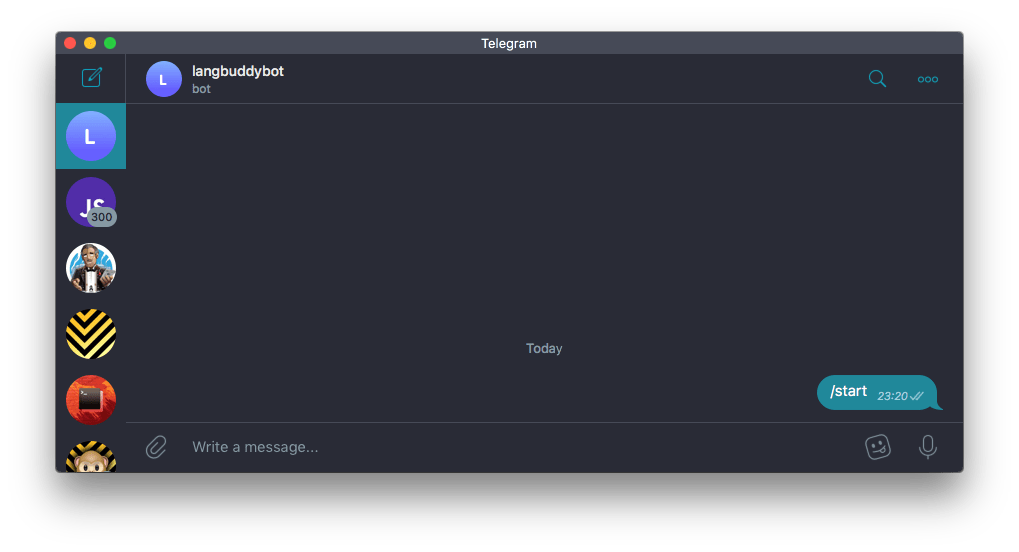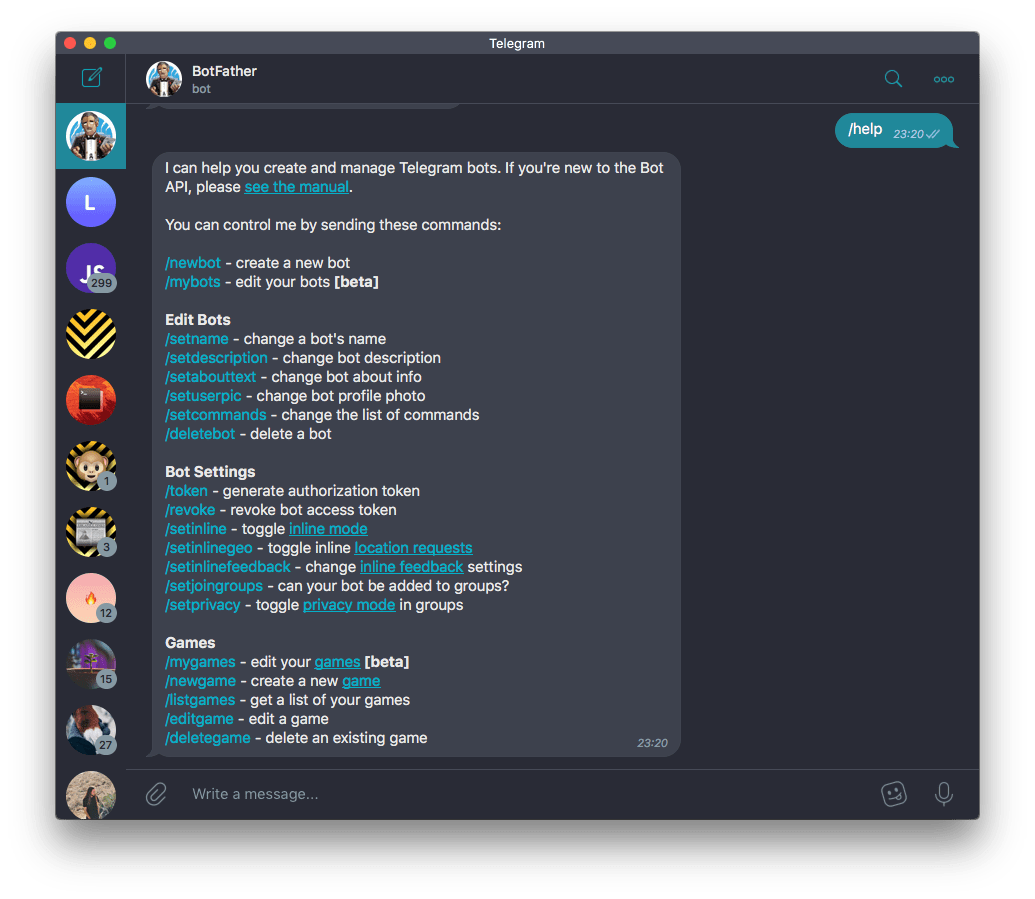Remember when we started with Botfather? We had to click the “Start” button.
This is common to all bots. Until you click start, nothing happens.
Using Telegraf we can set our bot to respond to this command by simply adding a callback function to the start() method:
bot.start(ctx => ctx.reply('Welcome'))
Then all we need to do to create a fully functional bot is to call
bot.startPolling()
so that it automatically listens for new messages and chats.
Now we can press the “Start” button on our bot profile in Telegram and it will reply “Welcome”!
If you already pressed it before, right-click the profile and press “Clear History”. You will then start from a clean slate.

The start() command only runs once. Now that we started our interaction with the bot, we can listen for other things that are sent in the chat.
Responding to /help
We can react to the /help command, which is a standard command you can send to any bot. Bots usually explain how to use them.

How do we do that? We add a callback to the help() method:
bot.help(ctx => ctx.reply('Here\'s all the help I can give!'))
The context
What is ctx? We saw it in start() as well. It’s the context object. Every request gets its own context object, and you can inspect it to gain more information about the message, including
ctx.messagethe received messagectx.inlineQuerythe received inline query (more on this later)ctx.fromthe message sender info
The ctx object also exposes some methods we’ll use to interact with the chat, including:
ctx.reply()sends a message to the chat
Intercept any message
Using the on() method you can intercept any message coming in from the chat, and do something. In this case we reply “Hey!”:
bot.on('message', ctx => ctx.reply('Hey!'))
Intercept a specific message
You can listen for a specific message in the chat using
bot.hears('hi', ctx => ctx.reply('Hey there'))
Warning: this is case sensitive.
To respond to a command whatever the case is, use a regular expression:
bot.hears('/hi/i', ctx => ctx.reply('Hey there'))
Check out a guide to JavaScript Regular Expressions to know more about regular expressions.